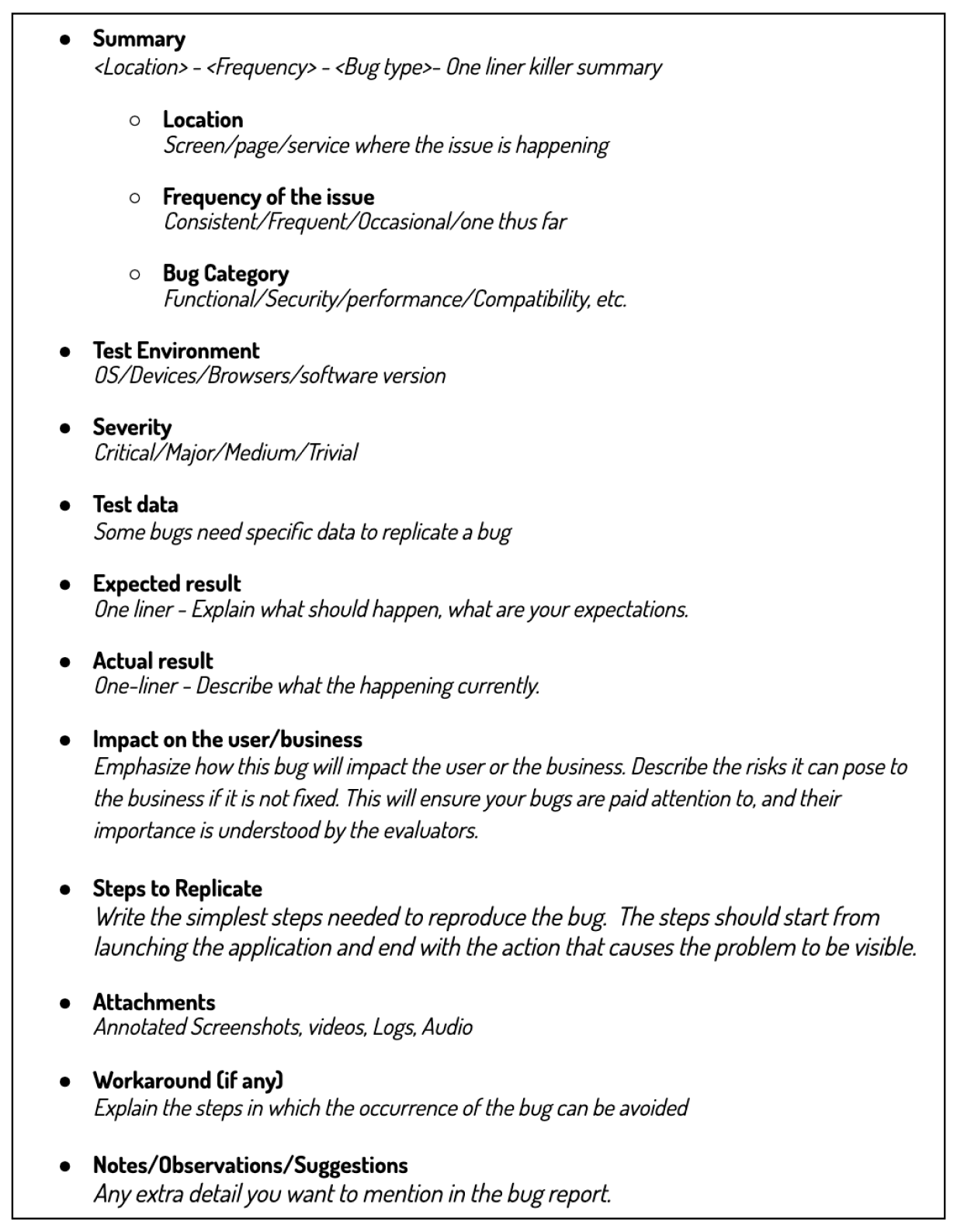Ultimate guide to win a testing hackathon

Prashant Hegde specializes in building high-performing teams. He is an accomplished writer and an international speaker.
Published on

The goal of testing hackathons, often called Bugathons or Bug-hunt, is for testers to test unfamiliar applications and find bugs in a limited amount of time. Thereafter, rewards are rolled out to those testers/teams who have reported valuable bugs. In-person or remote testing hackathons are both possible.
In the past, I've triumphed in a few testing competitions, and I have coached my team to win many more. A few years ago, I created a set of slides to train my team for a testing hackathon. As part of our preparation for testing hackathons, my team reads through this content. Over the years, these ideas have helped several testers in my organization win testing hackathons. I decided to share it with a wider community so they can benefit from it as well.
You will discover useful tips in this article that can make you a testing hackathon victor. Regardless of whether the event is remote or in person, these tips apply.
1. Preparation is the key to success
The key to success in any competition is preparation. It is the preparation that separates the winners from the rest. You cannot achieve success merely by dreaming but only by dedicating time to prepare.
Get in-depth information about the event
- Know how the event will be structured and what the format will be.
- Paying attention to the registration form and the invite mail sent by the organizers.
- Go through the event website. Check out the sponsors; you may probably end up testing one of their apps.
- Research past events from the same organizers.
- Talk to the winners of the past testing hackathons. Take a look at their blogs and videos.
- Get to know your judges/sponsors/stakeholders. Find out who they are, and their evaluation criteria. Customize your strategy accordingly.
- Take the time to read the rules of the competition.
Form a diverse team
Most testing hackathons ask you to participate as a team. When assembling a team, keep diversity in mind. Create a team with diverse skills and knowledge. The team must work as one unit, or it's game over!
Brainstorm with your team and plan your strategy in advance
- Plan for collaboration tools in case of a remote event. Decide how files and messages will be exchanged.
- Conduct a mock testing hackathon a week before the competition,. Pick a random application to practice. Build a strong team by working together and getting to know each other well. Understand your team's strengths and weaknesses.
- Find ways to distribute work evenly. Ensure roles and responsibilities are clearly defined in advance rather than figuring them out during the event. Have a plan to utilize your time as effectively as possible.
Have a range of devices at your disposal
2. Make the best out on the product briefing
There is usually a briefing event before a testing hackathon where the product owner introduces you to the application to test. The product owner also discusses his expectations from the exercise. So arrive early to avoid missing the product briefing session.
- Make sure you understand the scope of testing during the briefing. Avoid testing the features that are not in scope. They may also communicate some known issues that you should avoid reporting.
- Get a sense of what the product owner expects and what kinds of bugs they are looking for. Customize your strategy accordingly.
- Don't make any assumptions! To gain a better understanding of the product, ask questions to the product owners.
- Identify if there are any known bugs already so that you can avoid reporting them again.
- Note the event deadlines, when you need to stop reporting bugs, and plan accordingly.
- Get to know how to communicate with the product owner after the briefing. Ensure you keep checking the updates, hints, and changing expectations of the stakeholder in constant communication channel.
3. Focus on finding high impact bugs
The severity of the defects you find determines if you win a testing hackathon.
To test well, think like the end user
To be effective at testing, you need to understand the customers, their needs, and how they use the software. You must mimic how the customer tests the product, both in terms of user actions and data, to find serious risks. Figure out:
- Who are the customers that the application serves?
- Find patterns in the customer segment they are trying to target.
- What problems are the customers trying to solve using the application?
- Does the application deliver on what it promises?
- Who are the competitors of the application?
- What is the differentiator of this application from the rest?
- What do the reviews say about the application?
- Take a look at your product documentation.
Complete end-to-end business-critical flows
Some business flows are critical to the application's success. Try to discover issues and improvements by taking the user's journey; Superficial testing won't help.
Complete end-to-end business critical flows. Example - checkout flow in an e-commerce app. A deep dive into this gives you an advantage over everyone else. Identify issues that could cause:
- High impact on the end-user
- Revenue or reputation loss for the business
- Leakage of confidential data - security vulnerabilities.
Be empathetic. When you are testing, pay attention to your emotions. Does the experience while testing any of the flows make you angry, frustrated, surprised, awkward, embarrassed, bored, scared, or confused? Note them and use them to report bugs that can enhance the overall experience.
Heuristics 🧠 — Cheat sheets for success
A heuristic is a rule of thumb or a mental shortcut that accelerates problem-solving. Although heuristics are fallible, they still play a vital role in facilitating quick problem-solving in uncertain situations. The term heuristic refers to a ready-made test idea that can be repeatedly used. Using a heuristic, you can quickly develop test ideas to help find bugs. Furthermore, they will help you identify risks in the application without spending a great deal of time on it.

Below are some useful resources:
- Testing Heuristic cheatsheet - Elisabeth Hendrickson
- Mobile App testing heuristic - ISLICEDUPFUN - Jonathan Kohl
- Test insane - Mindmap Library
- Testing Mnemonics Mindmap - Del Dewar
Note that, It won't help if you just know about Heuristics. Make use of them by applying them to your day-to-day testing.
4.Good bug reports win testing hackathons
The key to winning a testing hackathon is to make your bug report stand out among hundreds of others. You can trust me on this; judges will not have time to investigate all reported bugs in detail. Even the judges are under time pressure during a testing competition. The judges should be able to quickly understand the problem based on your bug reports. Not every bug would be read or replicated.
To win, your bugs must catch the Judges' attention. Obviously, you should find serious bugs, but it is equally important that you report them in a way that will be read. How to do that?
Use bug summary as a clickbait
Don't get me wrong here. Clickbait has earned a bad reputation. primarily because they lead to deceptive content. Click baits are great when your headline matches your content. You will lose the opportunity to win even if you find the most severe bug in the application and judges fail to notice it. Many participants in Testahon's mark their bugs as severe to attract judges' attention. As a result, it is difficult for judges to categorize bugs and access them by severity.
The bug summary is read more frequently than any other section of the bug report. Your bug summary needs to be catchy and compelling. Your bug summary should be distinctive enough to make the judge read your bug report. The summary should be concise yet help the reader to understand the problem without needing to read the bug description.
Prepare your sample bug reporting template in advance
In a testing hackathon, you need to report bugs rapidly. You need a template to accelerate your bug reporting. In cases where multiple people report issues, a standardized template ensures uniformity and quality while preventing crucial details from being missed.
Use the template below to create a bug report:

Modify this template to suit your needs.
Improve your ability to write persuasive bug reports
Your word choice can make a bug sound minor or serious. I'm not suggesting you make a trivial bug sound serious. The art of persuasive writing can be learned by studying and practicing bug advocacy. Ensure that bugs are written in a way that maximizes their chances of being accepted and fixed.
Don't compromise on speed or quality
High-quality bug reports will set you apart from the crowd, but you don't have the luxury of devoting too much time to bug reporting. Quality is frequently cited as being more significant than quantity in testing competitions. But trust me when I say that your chances of winning increase with the number of genuine bugs you report. There is no doubt that the severity of the bugs matters as well. Nevertheless, the number of bugs matters as well. So learn to balance speed and quality at which you report bugs.
My secret weapon in testing hackathons: Bird Eats Bug

Attaching screenshots, logs, or recording videos is the most time-consuming part of bug reporting. In testing hackathons, you can save 50% of your time in bug reporting. Yes, you heard me right! Bird is a free tool that generates high-quality bug reports automatically by capturing video and technical information like Console logs, network requests, system info, etc. It captures every detail that developers need to fix the bug.
Bird further accelerates your bug reporting by providing you with a link that can be shared within your bug reports. Furthermore, Bird offers features like "Replays," which makes it easy for you to reproduce bugs inconsistent bugs during the testing hackathon.
5. Use the right tools to ease your work
Tools can help you ease software testing during contests. I often use the following resources during testing hackathons:
6. More tips...
Conclusion
The excitement and fun of testing contests are unbeatable! First-time testing hackathoners may find all of this overwhelming. Participants who put in the hard work into a testing hackathon and don't win prizes find it difficult. Don’t take the wins or losses too seriously. Understand that winning isn't everything. Learn from your experiences and keep improving. Attend testing competitions for the right reasons. Participating in testing competitions should allow you to learn new things, meet new people, have fun, and improve your testing skills.
- Get to know other testers and socialize with them.
- Ask for feedback from the organizers/product owners.
- Take some pictures and share them on social media.
- Blog about your experiences and learnings.
- Provide feedback to event organizers.
Plan ahead, assemble a diverse team, gain insightful information from the briefing, concentrate on discovering high-impact bugs, produce killer bug reports, and use the appropriate tools to improve your chances of winning testing hackathons.
Bookmark this article and return to it before your next Big Testing competition. Best wishes!
Data-rich bug reports loved by everyone
Get visual proof, steps to reproduce and technical logs with one click
Continue reading
Put your knowledge to practice
Try Bird on your next bug - you’ll love it
“Game changer”
Julie, Head of QA
Try Bird later, from your desktop




.png)


